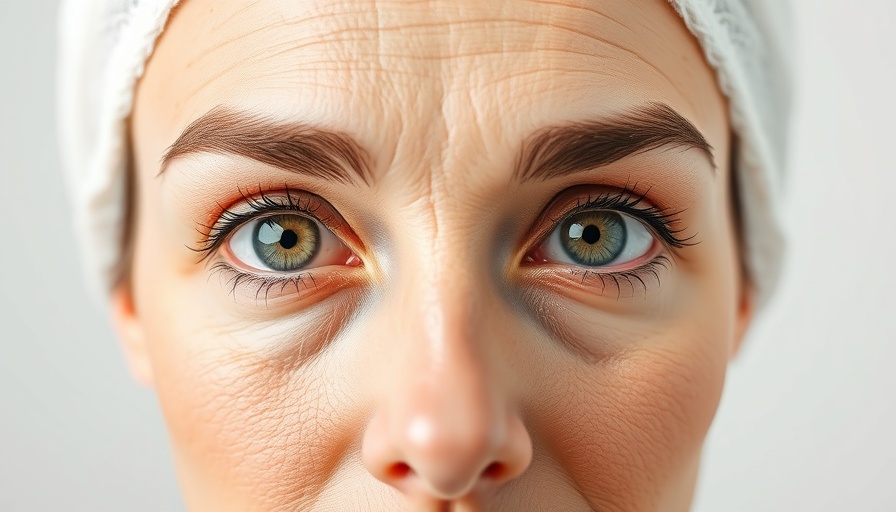
Melasma: Your Guide to Understanding and Embracing Your Skin's Story
Ever noticed those subtle (or not-so-subtle) brown or grayish patches gracing your cheeks, forehead, or upper lip? Perhaps you've heard it whispered as the "mask of pregnancy". If so, you're not alone. This common skin condition, known as melasma, affects countless individuals, and while it's entirely harmless, it can understandably impact how you feel about your skin.
The experts at the highly respected Cleveland Clinic aptly describe melasma as a skin disorder where you might experience "light brown, dark brown and/or blue-gray patches on your skin". Interestingly, the term itself loosely translates to "black spot". These patches can appear as flat areas or even resemble freckle-like spots. What's fascinating is how dynamic melasma can be, often darkening in the sun-drenched summer months and lightening as winter's touch prevails.
Let's take a journey to truly understand melasma, separating fact from fiction and empowering you with valuable insights drawn directly from the expertise of dermatologists and trusted medical sources. Our aim is to not just inform, but to connect with your experience and provide actionable knowledge to navigate this common skin story.
Decoding the Melasma Mystery: Unraveling the Causes and Triggers
One of the first myths we need to bust is the idea that sun exposure alone causes melasma. While it's true that the sun plays a significant role in exacerbating the condition, the primary drivers often lie within hormonal shifts. This is why melasma is so prevalent among pregnant women, with as many as 50% experiencing it. These hormonal changes, specifically increased levels of estrogen and progesterone, are thought to contribute significantly. That’s where the nickname, "mask of pregnancy" or chloasma, another less common term for melasma comes from. It's important to remember, however, that melasma isn't exclusive to pregnancy and can affect men and women of all ages.
But the story doesn't end with hormones. Our research with a prominant NC MedSpa led us to a revealing tapestry of internal and external factors that can trigger or worsen melasma:
Sun Exposure: Ultraviolet (UV) rays stimulate your skin to produce more melanin, the pigment responsible for skin color. Notably, skin cells produce melanin independently, which explains why sun exposure can darken some spots more than others. Remember, melasma is a form of hyperpigmentation, though not all sunspots are melasma.
Genetics: While not the sole cause, certain genes can increase your predisposition to developing melasma. So, a family history might play a role.
Dietary Choices: While not explicitly detailed in these sources, dietary factors are mentioned as potential triggers.
Medications: Certain medications can influence the likelihood of melasma development. Oral contraceptives and hormone therapies are specifically mentioned as risk factors.
Skincare and Makeup Products: Surprisingly, some skincare and makeup products can also trigger melasma.
Stress: Even the stresses of daily life can be a contributing factor.
As one source aptly puts it, "While some people only experience melasma for a few months, others battle the condition for their entire lives". This highlights the variable nature of melasma and the importance of understanding your personal triggers.

Diagnosing Melasma: What to Expect at the Dermatologist's Office
If you suspect you have melasma, seeking guidance from a dermatologist is a crucial first step. Often, a dermatologist can diagnose melasma simply by a close visual examination of your face and neck. To gain a deeper understanding, they might utilize specialized tools like a Wood's lamp or a dermatoscope. These devices, placed on or near your skin, help the dermatologist see how deeply the darker pigment extends into the skin's layers. This information is invaluable when formulating an effective treatment plan.
Sometimes, to rule out other skin conditions that may mimic melasma, your dermatologist might perform a skin biopsy, a quick and safe procedure involving the removal of a small skin sample for further examination.
Understanding the emotional impact of melasma is also important. Your dermatologist may ask questions or provide a questionnaire to understand how the condition affects your life. As the Cleveland Clinic notes, "Although this disorder is completely harmless, it understandably makes some people feel self-conscious". Recognizing this emotional aspect is key to providing holistic care.
The Path to Management: Treatment Strategies and Realistic Expectations
When it comes to treating melasma, it's essential to understand that "there is no one best treatment". Often, the most successful approaches combine consistent sun protection with medications applied to the skin, and sometimes, in-office procedures.
The primary goals of melasma treatment are to "decrease how much pigment your body makes" and to "even out your skin tone, restoring it to your natural color". Here’s a closer look at the strategies your dermatologist might recommend:
-
Sun Protection: Your First Line of Defense: Given the sun's significant role in darkening melasma and causing new patches, diligent sun protection is paramount. This often involves:
Wearing a wide-brimmed hat when outdoors.
Seeking shade, especially during peak sun hours.
Applying a broad-spectrum sunscreen with an SPF of 30 or higher throughout the day. Dermatologists often recommend sunscreens containing zinc oxide, titanium dioxide, or iron oxide for melasma patients. If the white cast of sunscreen is a deterrent, consider using a tinted sunscreen. Remember, "Sun protection can help fade melasma and prevent it from returning".
-
Topical Medications: Targeting Excess Pigment: Your dermatologist may prescribe one or more medications to decrease the excess pigment in your skin. Common options include:
Hydroquinone: A frequently used treatment that evens out skin tone. It's now only available with a prescription.
Tretinoin and a mild corticosteroid: This combination of a retinoid and an anti-inflammatory helps even out skin tone.
Triple combination cream: A potent formulation containing tretinoin, a corticosteroid, and hydroquinone.
Gentler alternatives: For some individuals, medications like azelaic acid, kojic acid, or vitamin C may be prescribed.
The Correct Order of Application: If you use makeup to cover melasma, dermatologists recommend a specific order for optimal results:
Melasma medication
Sunscreen
3. Camouflage makeup
Using camouflage makeup can be helpful while waiting for treatment results. Your dermatologist can offer tips for achieving a natural look.

-
In-Office Procedures: Enhancing Treatment Outcomes: For stubborn melasma or to improve results, your dermatologist might suggest one or more of the following procedures:
Chemical peels: Applying a chemical solution to the melasma to remove excess pigment.
Microneedling: A minimally invasive procedure creating tiny skin injuries that can lead to a more even skin tone as the skin heals.
Laser and light treatments: Certain studies suggest these can improve results when combined with topical medications and sun protection.
-
Platelet-rich plasma (PRP): Injecting a concentrated component of your own blood into the melasma-affected skin to help even out skin tone.
It's crucial to seek these procedures only from a board-certified dermatologist. Their in-depth knowledge of the skin ensures the selection of the right procedure, realistic expectations, and safe execution.
Keep in mind that seeing noticeable results from melasma treatment takes time. Also, treatment for melasma is typically considered cosmetic and may not be covered by insurance. Therefore, discussing the cost of treatment with your dermatologist is essential.
Embracing Your Skin's Journey: A Message of Hope and Action
Melasma, while persistent for some, is a condition that can be managed effectively with the right approach and guidance from a dermatologist. The key takeaways from our exploration are:
Melasma is common and benign: It's not cancerous or painful.
Hormones and sun exposure are key players: Understanding your triggers is crucial.
Sun protection is non-negotiable: It's the cornerstone of both treatment and prevention.
Various treatment options exist: From topical medications to in-office procedures, a tailored plan can be developed for you.
-
Patience and consistency are vital: Results take time, so stick with your treatment plan and sun protection regiment.
The journey with melasma can sometimes feel frustrating, but remember that you are not alone. By understanding the condition, embracing consistent sun protection, and partnering with a knowledgeable dermatologist, you can take inspired action towards achieving a more even and radiant complexion. Don't hesitate to connect with a board-certified dermatologist to discuss your concerns and create a personalized plan that aligns with your skin's unique story.
Disclaimer: This article provides general information about melasma based on the information from sources such as (Cleveland Clinic, American Academy of Dermatology and select MedSpa websites) and our interpretation should not be considered medical advice. It is essential to consult with a qualified dermatologist for diagnosis and treatment of any skin condition. They can provide personalized recommendations based on your individual needs and medical history.
 Add Row
Add Row  Add
Add 




 Add Row
Add Row  Add
Add 

Write A Comment